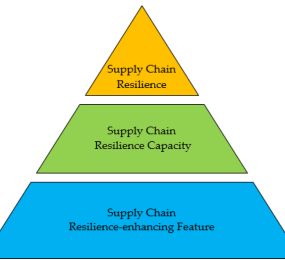Best Practices for Cyber Supply Chain Risk Management
Introduction
In 2025, businesses face an increasing number of cyber threats that target vulnerabilities in their supply chain risk management strategies. With digitalization and globalization, cybercriminals have more entry points than ever to infiltrate businesses. Organizations must adopt a proactive approach to supply chain cyber security to mitigate risks and ensure operational continuity.
One of the best ways to stay updated on the latest trends and challenges in supply chain risk management is by attending industry events like the 2nd Annual Supply Chain Risk and Resilience Forum. This event provides insights into the latest strategies, technologies, and case studies that help businesses build a resilient supply chain.
Why Cyber Supply Chain Risk Management Matters
A single weak link in your supply chain can expose your organization to cyber threats, leading to:
- Data breaches that compromise sensitive business and customer information.
- Operational disruptions due to ransomware attacks.
- Financial losses from cyber fraud and non-compliance penalties.
- Reputational damage affecting business credibility and customer trust.
A report by Cybersecurity Ventures estimates that cybercrime will cost businesses $10.5 trillion annually by 2025, making supply chain risk a top priority for enterprises globally.
Best Practices for Cyber Supply Chain Risk Management
1. Conduct Thorough Vendor Risk Assessments
- Assess suppliers' cybersecurity practices, policies, and compliance frameworks.
- Require vendors to adhere to international security standards such as ISO 27001 and NIST.
- Continuously monitor supplier networks for vulnerabilities.
2. Implement Zero Trust Architecture
- Enforce least privilege access to limit user permissions.
- Verify every user and device before granting network access.
- Regularly audit access logs to detect anomalies in real time.
3. Strengthen Supply Chain Cyber Security with AI and Automation
- Use AI-driven threat intelligence to identify and mitigate risks proactively.
- Automate security updates to reduce human error.
- Deploy machine learning algorithms to detect suspicious activity in the supply chain risk ecosystem.
4. Enhance Employee Awareness and Training
- Conduct regular cybersecurity awareness training for employees and vendors.
- Simulate phishing attacks to test employees' response to social engineering threats.
- Educate staff on the latest cyber threats and mitigation techniques.
5. Secure Third-Party Software and Hardware
- Verify the integrity of software updates and patches.
- Implement endpoint protection solutions across all devices.
- Ensure suppliers follow secure software development practices to prevent malware injections.
6. Develop an Incident Response Plan
- Create a well-defined cyber incident response strategy.
- Conduct regular cyber drills to test response effectiveness.
- Establish clear communication channels for quick decision-making during cyber crises.
7. Use Blockchain for Supply Chain Transparency
- Implement blockchain to track and verify transactions across the supply chain risk network.
- Prevent unauthorized modifications with a decentralized ledger system.
- Ensure product authenticity and compliance through immutable records.
Case Studies on Cyber Supply Chain Risk
Case Study 1: SolarWinds Supply Chain Attack
In one of the most significant supply chain cyber security breaches, the SolarWinds attack in 2020 demonstrated how hackers infiltrated IT management software to compromise thousands of global organizations. The incident emphasized the importance of third-party risk assessments and proactive cybersecurity frameworks.
Case Study 2: Toyota Production Halt Due to Cyber Attack
In 2022, Toyota was forced to halt operations at 14 plants due to a cyberattack on a key supplier. This incident highlighted the need for real-time monitoring and cybersecurity resilience across the entire supply chain risk management framework.
The Role of Supply Chain Management Conferences
The Supply Chain Management Conference is a crucial event for industry leaders looking to strengthen their cyber defenses. The 2nd Annual Supply Chain Risk and Resilience Forum brings together experts to discuss:
- Latest cybersecurity challenges impacting supply chains.
- Best practices for securing third-party vendors.
- AI-driven risk management solutions to prevent cyber threats.
- Regulatory compliance updates for supply chain security.
By attending, businesses gain access to real-world case studies, networking opportunities, and cutting-edge solutions that help enhance supply chain risk management strategies.
Statistics on Supply Chain Cyber Security
- 60% of organizations experienced a data breach caused by a third-party vendor in 2024.
- 90% of companies report increasing investment in supply chain risk management tools.
- 70% of cyber attacks now involve supply chain vulnerabilities.
- The average cost of a supply chain cyber security breach is estimated at $4.45 million per incident.
FAQs
1. What is Cyber Supply Chain Risk Management?
Cyber Supply Chain Risk Management (C-SCRM) refers to identifying, assessing, and mitigating cyber threats within an organization's supply chain to prevent security breaches and operational disruptions.
2. How Can Companies Improve Supply Chain Cyber Security?
Companies can improve supply chain cyber security by implementing vendor risk assessments, adopting zero trust models, using AI-driven security solutions, and attending industry conferences for up-to-date strategies.
3. Why Should Businesses Attend Supply Chain Management Conferences?
These conferences provide actionable insights, networking opportunities, and exposure to the latest cybersecurity technologies that help strengthen an organization’s supply chain risk management framework.
Conclusion
Cyber threats in supply chains are evolving, making supply chain risk management a business necessity. Companies must adopt a proactive approach by integrating AI, blockchain, and zero trust frameworks while continuously monitoring third-party vendors. Events like the 2nd Annual Supply Chain Risk and Resilience Forum provide valuable knowledge to help businesses stay ahead in supply chain cyber security. Investing in robust security measures today ensures business resilience and long-term success.
















